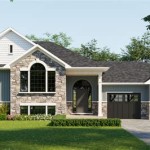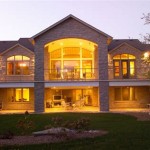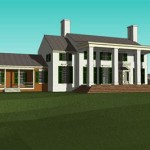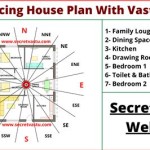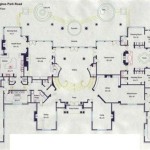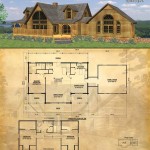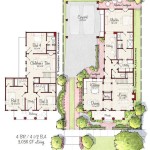Replica Queenslander House Plans: Capturing Heritage Charm
Replica Queenslander house plans offer an opportunity to build a new home that embodies the architectural elegance and functionality of traditional Queenslander houses. These plans are designed to recreate the distinctive features of the original style, while often incorporating modern building techniques and materials. The appeal of replica Queenslanders lies in their ability to provide a comfortable living environment suited to the Australian climate, combined with a timeless aesthetic.
The Queenslander style emerged in Queensland, Australia, during the 19th and early 20th centuries. These houses were specifically designed to address the challenges of the subtropical climate, prioritizing ventilation, shade, and elevation. Key characteristics include high-set construction, wide verandas, lightweight materials, and steeply pitched roofs. Replicating these features in new construction allows owners to enjoy the benefits of the original design while customizing the interior layout and incorporating contemporary amenities.
Understanding the Key Features of Queenslander Architecture
Successful replica Queenslander house plans meticulously recreate the defining elements of the original style. These elements are not merely decorative; they each served a specific purpose in creating a comfortable and functional living space in a warm climate.
High-Set Construction: One of the most recognizable features of a Queenslander is its elevation above ground level. This elevation serves several purposes. It allows for natural ventilation under the house, reducing humidity and cooling the interior. It also provides protection from floods and pests, a significant consideration in Queensland's climate. Replica plans must accurately reflect this elevation, ensuring that the house is raised to a suitable height and that the supporting structure is both aesthetically pleasing and structurally sound.
Wide Verandas: Verandas are an integral part of the Queenslander design. They provide shaded outdoor living spaces, allowing residents to enjoy the fresh air without being exposed to direct sunlight. The veranda also acts as a buffer between the interior and the exterior, helping to regulate the temperature inside the house. Replica plans typically include verandas that wrap around multiple sides of the house, maximizing their functionality and aesthetic appeal. The width and depth of the veranda are crucial considerations, as they directly impact the amount of shade and usable space.
Lightweight Materials: Traditional Queenslanders were constructed using lightweight materials such as timber and corrugated iron. These materials are relatively easy to work with and provide good insulation in a warm climate. Replica plans often incorporate modern equivalents of these materials, such as timber cladding, fiber cement sheeting, and colorbond roofing. These materials offer similar aesthetic qualities to the originals, while also providing improved durability and resistance to pests and weather. The choice of materials is a key factor in achieving an authentic Queenslander look.
Steeply Pitched Roofs: The steep pitch of a Queenslander roof is designed to facilitate rapid water runoff during heavy rainfall. This is particularly important in Queensland, where tropical storms are common. The steep pitch also creates a large attic space, which can provide additional insulation and ventilation. Replica plans accurately replicate the roof pitch of traditional Queenslanders, ensuring that the house is well-protected from the elements and that the attic space is properly ventilated. The roofing material, such as corrugated iron or tiles, also contributes to the overall aesthetic of the house.
Considerations When Selecting Replica Queenslander House Plans
Choosing the right replica Queenslander house plans involves careful consideration of several factors, including the size and shape of the property, the desired layout and functionality of the house, and the budget for construction. It is essential to work with an experienced architect or building designer who understands the nuances of Queenslander architecture and can create plans that meet your specific needs.
Property Size and Orientation: The size and shape of the property will influence the design of the house. A larger property may accommodate a more expansive design with multiple verandas and outdoor living spaces. The orientation of the property is also crucial. A well-oriented house will take advantage of natural sunlight and breezes, maximizing energy efficiency and creating a comfortable living environment. The plans should be tailored to the specific characteristics of the property, ensuring that the house is well-integrated into its surroundings.
Layout and Functionality: The layout of the house should be carefully considered to ensure that it meets the needs of the occupants. Traditional Queenslanders often feature open-plan living areas, which promote airflow and create a sense of spaciousness. The location of bedrooms, bathrooms, and other functional spaces should be carefully planned to maximize convenience and privacy. Replica plans can be customized to incorporate modern amenities such as ensuite bathrooms, walk-in closets, and home offices, while still maintaining the overall character of the Queenslander style.
Budget: The cost of building a replica Queenslander can vary depending on the size of the house, the materials used, and the complexity of the design. It is essential to establish a realistic budget before starting the design process and to work with an architect or builder who can provide accurate cost estimates. Choosing cost-effective materials and simplifying the design can help to reduce the overall cost of construction. It is also important to factor in the cost of landscaping and other site works.
Modern Adaptations in Replica Queenslander Design
While replica Queenslander house plans strive to capture the essence of the original style, they often incorporate modern adaptations to enhance comfort, convenience, and energy efficiency. These adaptations can include improved insulation, energy-efficient windows, and modern appliances. The key is to integrate these modern features seamlessly into the design, so that they do not detract from the overall aesthetic.
Improved Insulation: Modern insulation materials are far more effective than those used in traditional Queenslanders. Incorporating high-quality insulation into the walls, roof, and floors can significantly reduce energy consumption and improve thermal comfort. This can help to keep the house cool in summer and warm in winter, reducing the need for air conditioning and heating. Insulation should be carefully installed to ensure that it is effective and does not create moisture problems.
Energy-Efficient Windows: Traditional Queenslanders often featured single-pane windows, which are not very energy efficient. Modern replica plans typically incorporate double-glazed windows, which provide superior insulation and reduce noise transmission. These windows can also be treated with a low-E coating to further reduce heat gain in summer and heat loss in winter. The style of the windows should be carefully chosen to complement the overall aesthetic of the house. Casement windows and sash windows are common choices for Queenslander-style homes.
Modern Appliances and Fixtures: Modern appliances and fixtures can greatly enhance the convenience and functionality of a replica Queenslander. Energy-efficient appliances, such as refrigerators, washing machines, and dishwashers, can help to reduce energy consumption and lower utility bills. Modern fixtures, such as LED lighting and water-saving faucets, can also contribute to sustainability. The style of the appliances and fixtures should be carefully chosen to complement the overall design of the house. Stainless steel appliances and classic-style fixtures are often used in replica Queenslanders.
Finding a suitable piece of land is also vital for building a replica Queenslander. Land that is elevated or has a natural slope is ideal, allowing for the traditional high-set construction. The orientation of the land in relation to the sun and prevailing winds should also be considered to maximize natural light and ventilation. Local council regulations and building codes should be reviewed to ensure compliance, especially regarding set-back requirements and heritage overlays.
Constructing a replica Queenslander is a complex undertaking that requires expertise in both traditional building techniques and modern construction practices. Engaging experienced tradespeople who are familiar with Queenslander architecture is crucial for achieving a high-quality result. This includes carpenters, builders, painters, and roofers who are skilled in working with timber and other traditional materials. Regular communication and collaboration between the architect, builder, and tradespeople are essential for ensuring that the project stays on track and within budget.
Ultimately, replica Queenslander house plans offer a unique opportunity to create a home that is both beautiful and functional, while also celebrating the rich architectural heritage of Queensland. By carefully considering the key features of the Queenslander style, selecting the right plans, and incorporating modern adaptations, it is possible to build a home that will be enjoyed for generations to come.

Kit Homes Qld Is The Answer For A Queenslander Style Home In

Kit Homes Qld Is The Answer For A Queenslander Style Home In

The Queenslander Series 4x2 Total Home Frames

Queenslander Traditional Queenslanders

Kit Homes Qld Is The Answer For A Queenslander Style Home In

Traditional Queenslanders Garth Chapman

Kit Homes Qld Is The Answer For A Queenslander Style Home In

Traditional Queenslanders Garth Chapman

Queenslander Traditional Queenslanders

Kit Homes Qld Is The Answer For A Queenslander Style Home In

